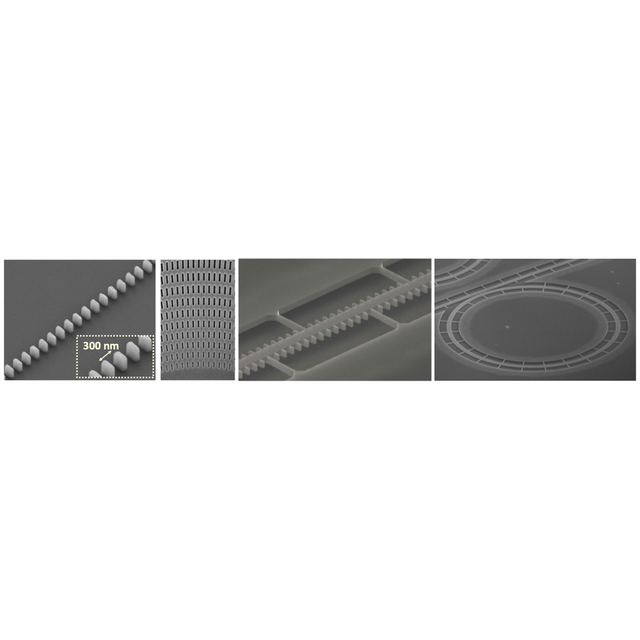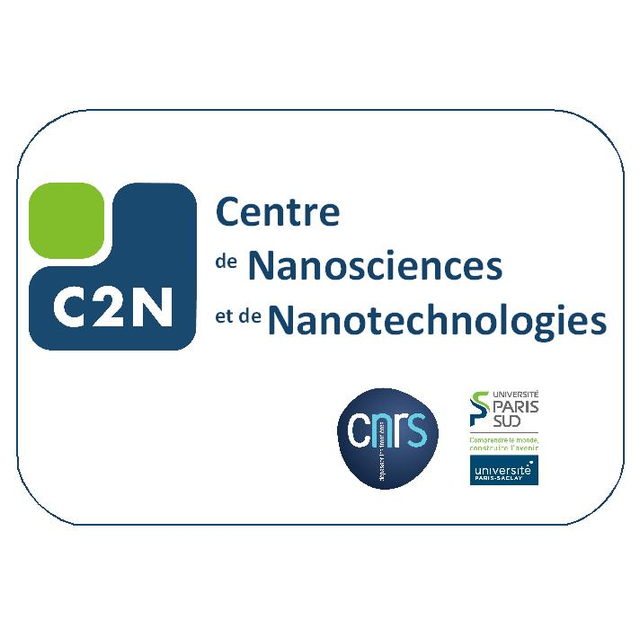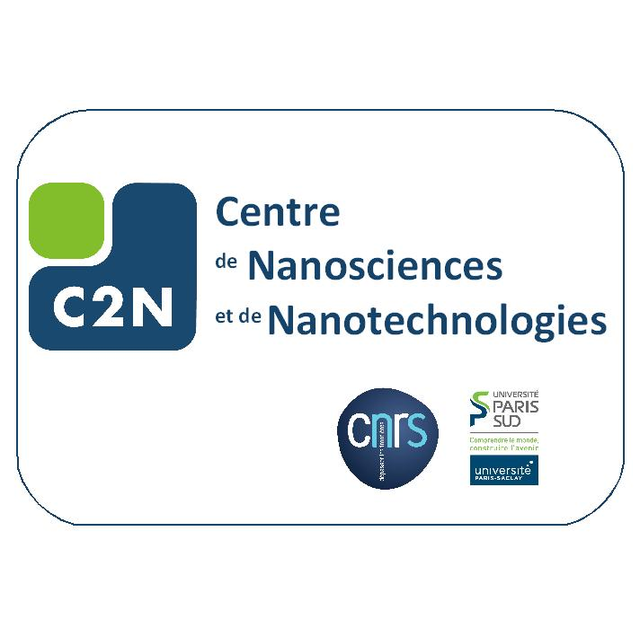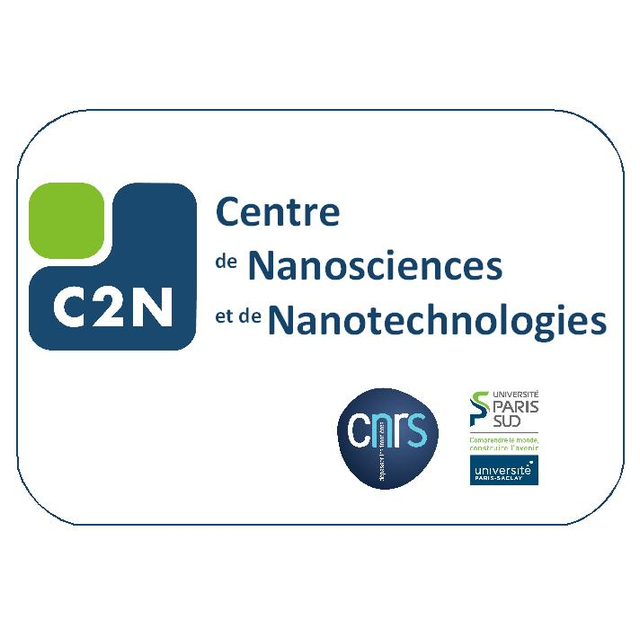
Seminars

Nanostructured silicon photonics for applications in the Near- and Mid-infrared
C2N, Amphithéatre, PalaiseauSeminars
Driven by the impressive technology development in the recent years, silicon photonics is expanding its frontiers towards new applications beyond Datacom. These include, among others, chemical and biological sensing, radio-over-fiber and quantum cryptography. Aiming to fulfil the requirements of these new applications Si photonics is now exploring alternative wavelengths, design strategies and novel physical phenomena. In this context, nanostructured photonic metamaterials have opened new prospects for controlling and manipulating light in planar waveguide circuits. By periodically patterning silicon with a pitch sufficiently small to suppress diffraction effects, subwavelength engineered structures open new degrees of freedom to control light propagation in silicon photonic circuits with unprecedented flexibility and accuracy. Since the early demonstrations of a silicon wire waveguide with subwavelength grating (SWG) metamaterial core, metamaterial SWG waveguides have attracted a strong research interest in academia and industry, enabling the demonstration of various devices with record performance, including fiber-chip couplers, ultra-wideband power splitters and mode converters, to name a few. In this presentation we will discuss the principles and emerging applications of subwavelength metamaterial silicon waveguides and will present an overview of our recent advances and
perspectives in this exciting field.

Spin torque driven oscillations of the reference layer in fully perpendicular magnetic tunnel junction
C2N, Amphithéatre, PalaiseauSeminars
Vadym Iurchuk1, Ahmed Sidi El Valli1, Nathalie Lamard1, Jürgen Langer2, Jerzy Wrona2, Ioan-Lucian Prejbeanu1, Laurent Vila1, Ricardo Sousa1 and Ursula Ebels1
1. Univ. Grenoble Alpes, CEA, CNRS, Grenoble INP*, INAC-Spintec, 38000 Grenoble, France
* Institute of Engineering Univ. Grenoble Alpes
2. Singulus Technologies AG, 63796 Kahl am Main, Germany
Spin torque nano-oscillators (STNO) are nonlinear auto-oscillating systems known to produce steady state magnetization precession in the microwave range, when a spin-transfer torque (STT) balances the Gilbert damping of a magnetic layer. Using strong interfacial perpendicular magnetic anisotropy (PMA), for either the polarizer or the free layer in magnetic tunnel junctions (MTJ) based STNOs, high output power, large tunability and zero-field operation [1–4] were demonstrated. In contrast, STNOs based on fully perpendicular MTJs (pMTJs) are highly desirable due to their integrability with current CMOS and STT-MRAM technologies. Such integrated systems-on-chip are of interest for sensing, processing and wireless data transfer applications as they can offer reduction in power consumption.
In this seminar I will report on the experimental observation of STT-driven microwave signal generation in pMTJs that were optimized for MRAM application. Besides signal generation other rf functions such as injection locking, frequency modulation and signal detection are demonstrated. In conclusion, this demonstration gives prospect to use the same magnetic stack for MRAM and rf functions.
The authors acknowledge funding from the EU Horizon 2020 project GREAT (No. 687973).
[1] W. Skowroński, et al, Appl. Phys. Express 5 063005 (2012)
[2] Z. Zeng, et al, Sci. Rep. 3 1426 (2013)
[3] B. Fang, et al, AIP Adv. 6 125305 (2016)
[4] S. Tamaru, et al. Sci. Rep. 5, 18134 (2015)

Lasing in strained Ge microbridges
C2N, Amphithéatre, PalaiseauSeminars
Lasing in strained Ge microbridges
F. Armand Pilon1,4, A. Lyasota1, Y-M Niquet2, V. Reboud2, V. Calvo3, N. Pauc3, J. Widiez2, J.M. Hartmann2, A. Chelnokov2, C. Bonzon4, J. Faist4 and H. Sigg1
1 Laboratory for Micro- and Nanotechnology, Paul Scherrer Institut, 5232 Villigen, Switzerland 2 Univ. Grenoble Alpes, CEA, LETI, 38054 Grenoble, France 3 Univ. Grenoble Alpes, CEA, INAC, 38054 Grenoble, France 4 Institute for Quantum Electronics, ETH Zürich, 8093 Zürich, Switzerland
Among the many favorable properties, Ge excels as CMOS-compatible system with bandstructure tunable by strain and/or alloying with Sn to become direct, such as the standard group III-V reference semiconductor laser systems. While GeSn lasing has been demonstrated 4 years ago [1], and is nowadays routinely used in many places, lasing of strained Ge has only been reported twice [2, 3], showing multimode low intensity emission.
Here, we report lasing both in single and multimode regimes, with very high efficiency and up to 100 K, under sub ns pulsed optical excitation in uniaxially loaded tensile strained Ge microbridges. We will give a full proof of unambiguous lasing, serving as benchmark for previous and future demonstration of group IV lasing.
[1] S. Wirths et al. Nature Photonics (2015).
[2] A. Elbaz et al. APL Photonics (2018).
[3] B. Shuyu et al., Nat. Comm. (2017).

Injection locking and spin transfer torque efficiency in three-terminal spin-torque oscillators
C2N, A003, PalaiseauSeminars
Beyond their nanoscale size and their tunability in frequency, spin-torque oscillators are of interest for their ability to lock to an external microwave signal or to mutually synchronize. In this work, we measure the injection locking of a three-terminal STO excited by spin-orbit torque. The three-terminal device consists of a magnetic tunnel junction (MTJ) on a Pt wire. A DC and microwave (MW) current are applied through the Pt wire to induce the oscillations and injection lock the device, respectively, and the precessional signal is measured via a spectrum analyzer through the MTJ. We study the injection locking at fMW≈f0 and at fMW≈2f0, where f0 is the free running frequency of the STO and fMW is the MW frequency. Interestingly, we observe a frequency response that is different from the injection locking of STO generally reported in the literature. Whereas typical phase locking behavior is observed at fMW≈2f0, the injection locking at fMW≈f0 exhibits a strong asymmetry. In this presentation, we give a qualitative and quantitative description of the injection locking in the three-terminal STO.
In the second part of this presentation, I use the three-terminal spin-torque oscillator to compare the spin-transfer efficiency of two mechanisms: the spin orbit torque and the spin filtering torque (i.e. spin transfer torque obtain via a spin polarized current through a spin valve (SV) or a MTJ). For this study, the device consists of a SV on top of a Pt wire. The devices can be excited either by the spin filtering torque (SFT) or by the spin orbit torque (SOT) depending on whether the current is applied through the SV or through the Pt wire. By varying the Pt width and the dimensions of the SV, we tune the SOT and STT and compare their efficiencies. We show that, for the device that we study, the SFT is more efficient in terms of current density, whereas the SOT can be more efficient than the SFT in terms of current when the Pt wire is narrower than 700 nm. Finally, we use three control samples (where the Pt wire is replaced by a Cu wire or where the SV is replaced by an MTJ) to discuss the limits of the method.
[1] Jué, Pufall, and Rippard, Appl. Phys. Lett. 112 (2018)
**IMPORTANT***
Participants external to C2N should register below prior to the seminar:
https://framaforms.org/registration-c2n-seminar-dr-emilie-jue-1545050748